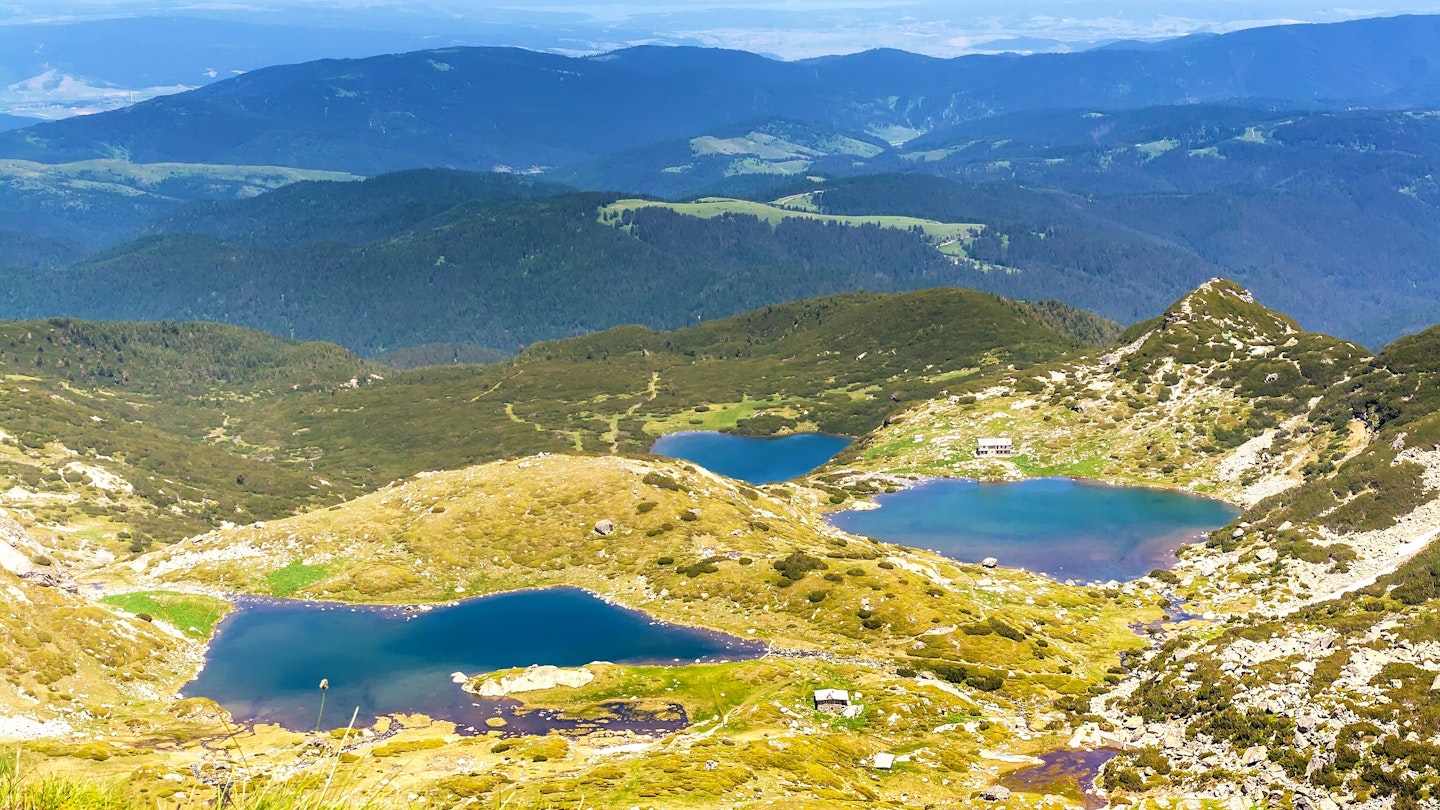Spanning 800 sq km in the expanses of Bulgaria’s Rodopi Mountains, Rila National Park is the Balkans’ top destination for outdoor adventures and snow sports. It is also a conservation reserve for some of Europe’s rarest wildlife. Thanks to the park’s efforts to keep Rila’s spectacular nature clean and sustainable, these two worlds can exist next to each other.
The forests, lakes, and mountains in Rila are clean and unspoiled because they are fiercely protected by the park’s management. Hiking and mountain-climbing are supported with an EU grant to develop sustainable tourism in Rila National Park. However, swimming, hunting, and fishing are forbidden almost everywhere, and camping is very carefully controlled.
Hiking
Within Rila National Park, hiking trails of various lengths and difficulties await adventurers. The best-known route is the Seven Rila Lakes, which begins in the village of Panichishte. This hike involves a climb (or chair-lift) through thick pine forest. Above the forest lies a wild plateau with seven glacial lakes. The hike takes you to each of them, from Dolnoto ezero (“The Lower Lake”, at 2100m) until you are perched on a precipice above the highest lake, Salzata (“The Tear”). At an altitude of over 2500m (8200ft), this platform offers breathtaking 360-degree views of Rila Park. Returning past the lakes and through the forest to Panichishte, this hike takes all day.
Another popular all-day hike leads to the summit of Musala. At an altitude of over 2900m (almost 10,000ft), Musala is the highest mountain between the Alps and the Caucasus. Starting in the Borovets ski resort, which involves a ride on the Yastrebets chair-lift, the climb to the peak is steep and requires navigating through jagged boulders. While reaching Musala’s summit is a significant challenge, it is achievable for those who are fit and prepared for cold conditions. The round-trip hike takes approximately six hours.

Skiing
Located near Musala, the Borovets area outside the town of Samokov (50km from Panichishte) serves as Bulgaria’s most luxurious outdoor adventure resort. Borovets features slopes and trails suitable for all types of snow sports. Additionally, a variety of après-ski bars enhance the experience; however, environmental activists focused on Rila’s preservation have ensured that visitors are provided with guidelines about how to behave responsibly in the park.

Wildlife
Adjacent to the ski slopes, the pine forests of Rila National Park host 48 species of mammals, including brown bears, grey wolves, and wild boars, as well as nearly 100 bird species, including the protected little owl and capercaillie. Thanks to the park’s management, conservationists are able to maintain and research Rila’s diverse habitats. Visitors who come to ski or hike are encouraged to learn about the wildlife; in Panichishte’s visitor center, you will find maps and videos showcasing Rila’s biodiversity.
Steam Baths
A 10km hike from Panichishte (or about an hour’s drive from Borovets and Musala) brings you to the spa town of Sapareva Banya. With both indoor and outdoor naturally heated mineral pools open year-round, the spas offer relaxation for legs and backs worn from hiking Musala and the Seven Lakes. Restaurants in Sapareva Banya serve local Rodopi dishes, almost all of which are vegetarian. After a day of exploring Rila National Park, nothing is more rewarding than indulging in a plate of panagyurski eggs, accompanied by a glass of organic Bulgarian wine or rakia (local brandy).





